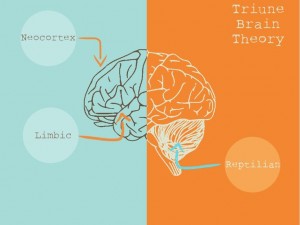1. The Soul as Animator
 Ignorance is bliss is the byword that stands at the beginning of the soul’s story.
Ignorance is bliss is the byword that stands at the beginning of the soul’s story.
Everything living, for pre-Socratic writers and thinkers, has a life-force: pneuma (literally, breath, wind, that vital spirit ‘blown’ into us at birth), which also overlaps with psyche (breath, life, soul).
This soul primarily distinguishes animate from inanimate, the living from the dead. And these souls aren’t picky about what or who they inhabit. Pythagorus believed that human souls could take up residence in plants; Empedocles ruminates over whether he’d been a bird, a fish, or a bush in a previous incarnation.
It’s a nonpartisan, somewhat permissive view of souls which lends itself very nicely to what we might now call animal rights. Xenophanes out strolling one day sees a puppy being whipped and intervenes with this admonishment: “Stop, don’t beat it, since in truth, it is the soul of a friend which I recognised upon hearing it cry out.”
2) The soul as prisoner
 As we know from the story of Adam and Eve, it doesn’t take long for someone to come along and poop the party. In this case, it’s Plato, who in Phaedo gives the soul the capacity to vibe with the essence of things (Beauty, Equality, Triangularity, whatever).
As we know from the story of Adam and Eve, it doesn’t take long for someone to come along and poop the party. In this case, it’s Plato, who in Phaedo gives the soul the capacity to vibe with the essence of things (Beauty, Equality, Triangularity, whatever).
The body, perhaps because it is unable to do this, “imprisons” the perceiving soul, forcing it “to view reality not directly but only through prison bars, wallowing in utter ignorance”.
The Platonic soul, prefiguring Freud’s tripartite structures of the mind, becomes a polarized entity, with different parts at odds with each other.
 How can a soul both love and hate, often at the same time? Or desire something one moment, but then be averse to it the next? The only way to make sense of this is to divide the metaphorical prisoner into three parts: head (reason), heart (spirit and emotions), and stomach/genitals (the more visceral desires of lust and greed). Freud, canny intellectual magpie that he was, must have directly lifted his Super Ego, Ego, Id from this division.
How can a soul both love and hate, often at the same time? Or desire something one moment, but then be averse to it the next? The only way to make sense of this is to divide the metaphorical prisoner into three parts: head (reason), heart (spirit and emotions), and stomach/genitals (the more visceral desires of lust and greed). Freud, canny intellectual magpie that he was, must have directly lifted his Super Ego, Ego, Id from this division.
The neurologist Paul Maclean would in the 60s back these abstractions up with his model of the triune brain: each layer of our wetware fused onto the one that had evolved before it.
 This utterly haphazard bio-hack (no wonder we’re pretty much all over the place, so much of time) had occured over millions of years, starting with the primitive, fight-flight reptilian brain of our lizard and bird ancestors, moving onto the paleomammalian brain with its limbic system allowing for what we now call ‘emotions’.
This utterly haphazard bio-hack (no wonder we’re pretty much all over the place, so much of time) had occured over millions of years, starting with the primitive, fight-flight reptilian brain of our lizard and bird ancestors, moving onto the paleomammalian brain with its limbic system allowing for what we now call ‘emotions’.
Finally: grey matter, the neocortex icing on our brain-cakes which has been appointed, from Plato onwards, as the primary mechanism for keeping us on the straight and narrow, allowing for language, abstraction, planning, and perception; truth, wisdom, analysis.
And self-control. Handy for when the mince-pies and whiskey are waving from the dining room table at this time of year.